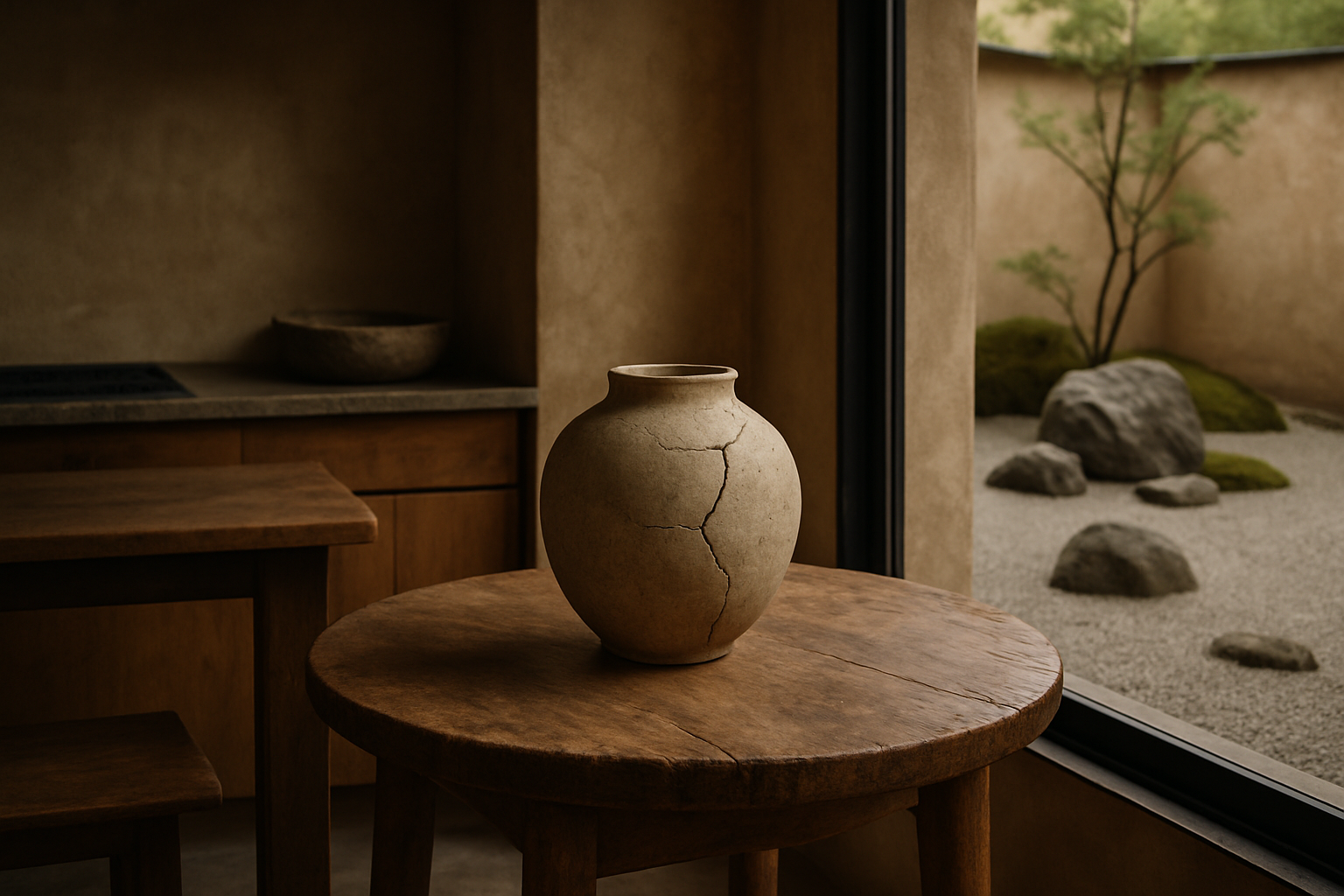Embracing Wabi-Sabi: The Art of Imperfect Beauty in Home Design
In a world obsessed with perfection, a counterintuitive design philosophy is gaining traction among homeowners and interior designers alike. Wabi-sabi, the ancient Japanese aesthetic that celebrates imperfection, transience, and incompleteness, is making waves in Western home decor. This article delves into the essence of wabi-sabi, exploring how its principles can transform living spaces into havens of serenity and authenticity.

The Origins and Philosophy of Wabi-Sabi
Wabi-sabi has its roots in Zen Buddhism, evolving over centuries to become a cornerstone of Japanese aesthetics. The term wabi originally referred to the loneliness of living in nature, while sabi meant withered or lean. Over time, these concepts merged to represent a worldview that finds beauty in simplicity, impermanence, and the authentic marks of age.
In the context of home design, wabi-sabi encourages us to appreciate the patina of well-used furniture, the irregular textures of handcrafted objects, and the subtle imperfections that make a space uniquely ours. It’s about creating environments that feel genuine and lived-in, rather than sterile showrooms that prioritize flawlessness over comfort.
Incorporating Wabi-Sabi Elements in Your Home
Embracing wabi-sabi doesn’t mean neglecting your space or filling it with broken objects. Instead, it’s about curating items that tell a story and create a sense of harmony with nature and time. Here are some ways to incorporate wabi-sabi principles into your home:
-
Choose natural materials: Opt for wood, stone, clay, and organic textiles that age beautifully and develop character over time.
-
Embrace asymmetry: Mix and match items of different sizes, shapes, and textures to create a balanced yet imperfect arrangement.
-
Celebrate wear and tear: Instead of discarding items with signs of use, appreciate the history they represent. A chipped vase or a weathered wooden table can add depth and interest to a room.
-
Incorporate handmade items: Support local artisans by including handcrafted pottery, textiles, or furniture pieces that showcase the maker’s touch.
-
Use a muted color palette: Soft, earthy tones and natural hues create a calm, grounded atmosphere that aligns with wabi-sabi principles.
The Emotional Impact of Wabi-Sabi Spaces
Beyond aesthetics, wabi-sabi has profound psychological benefits. In a fast-paced world where we’re constantly bombarded with images of perfection, wabi-sabi spaces offer a respite. They remind us to slow down, appreciate the present moment, and find beauty in life’s imperfections.
Research has shown that environments aligned with wabi-sabi principles can reduce stress, promote mindfulness, and enhance overall well-being. By surrounding ourselves with objects that bear the marks of time and use, we create a more authentic connection to our living spaces and the memories they hold.
Wabi-Sabi in the Garden
The principles of wabi-sabi extend beautifully to outdoor spaces, offering a refreshing alternative to manicured, pristine gardens. A wabi-sabi garden embraces the natural cycles of growth, decay, and renewal, creating a landscape that changes with the seasons and requires minimal intervention.
Key elements of a wabi-sabi garden include:
-
Native plants: Choose species that naturally thrive in your climate, requiring less maintenance and creating a harmonious ecosystem.
-
Weathered materials: Incorporate aged wood, rusted metal, or moss-covered stones to add character and a sense of history.
-
Asymmetrical design: Avoid rigid, formal layouts in favor of natural, flowing arrangements that mimic nature’s patterns.
-
Seasonal appreciation: Embrace the beauty of each season, from spring blossoms to autumn leaves and winter’s bare branches.
-
Mindful imperfection: Allow some areas to grow wild or leave fallen leaves in place, celebrating the natural cycles of life and death in the garden.
The Future of Wabi-Sabi in Western Design
As sustainability and mindfulness become increasingly important in home design, wabi-sabi is poised to play a significant role in shaping future trends. Its emphasis on longevity, natural materials, and emotional connection aligns perfectly with the growing desire for more sustainable and meaningful living spaces.
Designers and homeowners are finding creative ways to blend wabi-sabi principles with contemporary aesthetics, resulting in spaces that feel both timeless and modern. This fusion of Eastern philosophy and Western design sensibilities is giving rise to a new, more thoughtful approach to creating homes that nurture both body and soul.
Challenges and Misconceptions
While the appeal of wabi-sabi is growing, it’s not without its challenges. In a culture that often equates newness with value, embracing imperfection can be difficult. Some may misinterpret wabi-sabi as an excuse for neglect or poor maintenance, missing the intentional curation and care that true wabi-sabi spaces require.
Education and exposure to authentic wabi-sabi environments are key to overcoming these misconceptions. As more people experience the calming, grounding effect of well-executed wabi-sabi spaces, the philosophy is likely to gain wider acceptance and understanding.
Finding Beauty in the Imperfect
In a world that often feels chaotic and overwhelming, wabi-sabi offers a path to creating homes that serve as sanctuaries of peace and authenticity. By embracing imperfection, celebrating the passage of time, and finding beauty in simplicity, we can create living spaces that nourish our souls and connect us more deeply to the world around us.
As we move forward in an era of increasing digital saturation and environmental awareness, the timeless wisdom of wabi-sabi provides a valuable counterpoint to the pursuit of perfection. In our homes and gardens, it invites us to slow down, appreciate the present moment, and find joy in the subtle, imperfect beauty that surrounds us every day.





